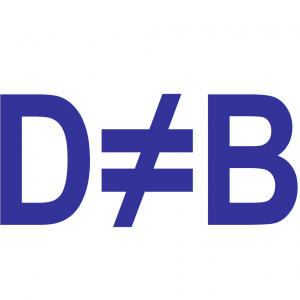 In past essays such as Branding vs. Marketing: In case you missed that lecture and Position first, then logo, I’ve touched on brand strategy informing key organization messages and organization visual identity.
In past essays such as Branding vs. Marketing: In case you missed that lecture and Position first, then logo, I’ve touched on brand strategy informing key organization messages and organization visual identity.
I should clarify brand strategy vs. design strategy and what defines each. Over the years, we’ve received cultural arts RFPs that stated the organization wanted a brand strategy and then went on to list all the graphic design they needed. I’ve had graphic designers explain to me how they developed a brand strategy for a cultural arts client with nary a mention of the usual components that make up a brand strategy. And we’ve had cultural arts clients complain to us about their organization’s brand when they were clearly talking about their organization’s logo.
In the above links I’ve spelled out the difference between branding and marketing and provided hopefully some useful definitions. And I’ve stressed the importance of first creating a position for your organization before beginning any design. You can click on the links for the details and a refresher.
So, at the risk of sounding like a broken MP3, a Brand Strategy contains at a minimum:
1. An identification of, and recommendations to resolve, an arts organization’s major communications issues (e.g. misperceptions to correct, new ideas to communicate, organization issues that needed to be rectified to ensure effective communications).
2. An analysis of the audiences with whom you want to communicate.
3. A Position Statement that focuses people internally on how think about your organization and is used to inform critical organization messages and visual identity.
4. Key Image Attributes, almost personality traits, for your organization that need to be communicated via messages or visuals. These often suggest graphic identity development.
5. Primary Organization Messages, and supplementary ones, that always need to be communicated about your organization.
Sure, there are variations on the names for the components that I list, but the components are pretty much consistent across the board.
A Design Strategy always has a graphic design outcome at its core. A Design Strategy could include a number of components including:
• A Creative Brief based on and is informed by the communications issues that were identified in the Brand Strategy.
• A visual analysis of comparable and/or competitive arts organizations’ graphic identities.
• An analysis of an arts organization’s current and possibly past graphic identities with an opinion on which aspects that may have accrued equity over time.
• An analysis of the symbology and meaning behind current or proposed graphic directions.
• An analysis and recommendation on the various design directions that could be followed to create an arts organization’s graphic identity.
• Design studies of layouts, image styles, typefaces, and/or colors
Keep in mind that I think a brand strategy and a design strategy are both important, however I believe that design strategy should stem from brand strategy.
Also, keep in mind that there are plenty of graphic communications projects out there that do not need a brand strategy, they just need effective graphic design.
Finally, I believe something as organizationally and strategically important as an arts organization’s visual image should be driven by a brand strategy, not solely a design strategy.
I hope this helps better clarify and identify services that you need, are asking for, and are being offered.
